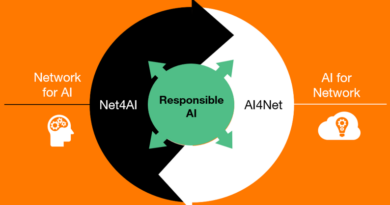
Carbon footprint of the public sector: to reduce, it is necessary to count well
Interview by Laurent Ulmann, Editor in Chief
SAP is recognized by analysts as a leader in environmental issues. How does this translate into your relationships with public customers?
Let me illustrate this with an example.
Since 2012, the French State’s accounting system (CHORUS) is operated by a SAP based technology. The planned modernization of this system involves migrating this tool to our new generation intelligent ERP system, S/4HANA.
This performance enhancement, which uses exclusively the SAP-developed database “In-Memory SAP HANA”, allows users to access their data, to mine them and to create value from them in real time and regardless of their size.
With this in mind, we have initiated discussions with representatives of the French government to go even further and implement true carbon accounting. We suggested working on a methodology to assign a carbon value to each act of management in the government’s financial accounting. The establishment of such a reference framework would allow the development of a carbon accounting ledger pilot project, which would mirror the State’s financial accounting, in a fully integrated and transparent manner.
The objective is to enable public authorities to quantify and evaluate the environmental performance of each of the areas covered by their financial accounting, in particular:
- public procurement, with systematic and harmonized measurement of expenditure and the inclusion of a set of indicators to measure its economic, environmental and social impact,
- State’s Real Estate,
- travels of public servants,
- sustainable use of land and nature.
We can even imagine implementing our most modern decision support tools (real-time visualization and simulation) in order to pilot, with an unprecedented degree of finesse and based on the data as they exist in real time, programs to reduce the carbon footprint of the public sector. I would add that these tools, thanks to their machine learning capabilities, can detect new correlations and potentialities.
Given the nature of the issue and the environmental crisis emergency, we believe it is essential that public policies be defined and implemented on the basis of data that are accessible in real time, consistent, comparable and auditable.
SAP is the European IT champion. Do you plan to work with other countries, particularly in Europe, on these issues?
Absolutely. With all those who wish to do so, particularly in the Middle East and Africa, regions that I am particularly involved in. However, as the European IT champion, we have naturally made the environment a major topic in our discussions with the European Union; especially since the adoption of the European climate law and the legally binding objective for member states of carbon neutrality in 2050.
The European Parliament and the Council of the EU agreed in April 2021 to adopt the objective of a net reduction of at least 55% of the European Union’s greenhouse gas emissions by 2030 compared to 1990 levels.
The example I have just mentioned for France could, in my opinion, serve as a model for all the member states of the European Union. Let me add that this would also be an opportunity to encourage synergies in the area of public sector transformation. This public accounting model, based on S/4 HANA technology, a carbon ledger and real-time visualization and simulation tools, would allow for a synergetic European management of carbon footprint reduction initiatives. In doing so, the Union would become an indisputable global model.
Let us imagine a Europe, or at least a certain number of European States, whose policies for reducing the carbon footprint of the public sector would be entirely based on data as they exist in real time and on the possibility of designing scenarios and assessing, still in real time, both the consequences and the effectiveness. This exemplary role of the public sector in decarbonizing its operations and actions, thanks to holistic management, would necessarily have a knock-on effect on the private sector.
And what about the SAP organization itself? Where do you stand?
We have revised our ambitions upwards. We are investing more than 100 million euros each year on a global scale to be net-zero by 2030, across our entire value chain, both upstream and downstream (scopes 1, 2 and 3). Our goal is clear: zero emissions, zero waste and zero inequality by 2030. Sustainability is at the heart of our development strategy and our solutions. This is the reason why we strongly believe that we can help our partners and customers to decarbonize their actions and strengthen their commitment to the environment and society.




